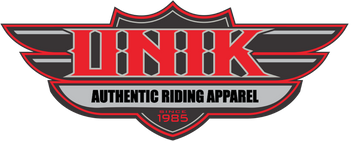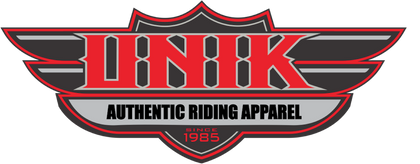Riding a motorcycle is pure freedom, the wind, the speed, the thrill. As a rider myself, I know how exciting it feels. But I also know how risky it can be. One small mistake or a distracted driver can lead to serious injuries.
That’s why proper gear matters. It protects you, boosts your comfort, and helps you ride with confidence. Whether you’re new to riding or commuting daily, this guide breaks down the best motorcycle gear every rider should have.
Why Motorcycle Gear Keeps You Safe
Motorcycles don’t have seatbelts or walls like cars. If you fall, you hit the ground hard. That can mean scrapes, bruises, or worse. Gear is like a shield. It protects your body from getting hurt. It also keeps you comfy in rain, wind, or heat. Imagine falling off your bike at 15 miles per hour. Regular clothes rip fast, but good gear saves your skin. Every rider needs gear to stay safe, no matter how good they are.
Motorcycle Riding Gear Checklist: What Every Rider Needs
Before we break things down, here’s a quick checklist of the core protective gear every motorcyclist should have. Whether you're commuting daily or riding on weekends, this list covers everything you need to ride smart and stay safe:
-
Helmet: Protects your head and face
-
Jacket: Shields your chest, back, and arms
-
Gloves: Protects hands and improves grip
-
Pants: Guards your legs, knees, and hips
-
Boots: Keeps feet, ankles, and toes safe
-
Earplugs: Reduces wind and engine noise
-
Extreme Weather Gear: Rain suit, thermal layers, summer mesh gear
-
Tool Kit: For quick roadside fixes
Now, let’s explore why each of these items matters, and what to look for when choosing your gear.
Helmet: Protect Your Head
Your head is super important, and a helmet is a must. A crash can hurt your brain, but a helmet can save you. Full-face helmets that cover your whole face and chin are the safest. They’re better than helmets that leave your face open, since many crashes hit the face.
What to look for:
-
Safety: Pick a helmet with a DOT sticker, which is required in the United States. For extra safety, look for ECE or Snell labels.
-
Fit: It should feel snug but not hurt. It shouldn’t wobble when you move your head. Try it on first.
-
Extras: Get one with air vents to stay cool and a visor to block bugs or sun. Don’t buy used helmets because they might not work well.
A helmet doesn’t just stop injuries. It keeps bugs from smacking your face at high speeds.
Jacket: Guard Your Body
A motorcycle jacket protects your chest, back, and arms. It stops cuts and bruises if you slide on the road. It also keeps you warm in cold weather or dry in rain. Regular jackets tear in a crash, but motorcycle jackets have special pads to soften bumps.
What to look for:
-
Material: Choose leather or strong fabrics like Cordura that don’t rip easily.
-
Padding: Look for pads on shoulders and elbows. A spot for a back pad is great too.
-
Fit: Snug but not tight, so it stays put when you ride.
-
Weather: Pick mesh for hot days or waterproof for rain.
For school or work, get a jacket you can slip over your clothes to save time. Following are motorcycle leather jackets i recommend for beginners.

|
 |
Motorcycle Gloves: Save Your Hands
Your hands steer, brake, and do lots of stuff every day. In a fall, you might put your hands out. Without motorcycle gloves, they can get really hurt. Motorcycle gloves keep your hands safe and help you grip the bike better.
What to look for:
-
Protection: Get gloves with palm sliders. They let your hand slide, not stick, in a fall. Knuckle padding helps too.
-
Material: Leather or tough fabrics with strong stitching.
-
Fit: Tight enough to stay on but comfy for moving your fingers.
-
Keep an extra pair in your bag for rainy or cold days.

|
 |
Pants: Shield Your Legs
Regular jeans tear super fast in a crash. That leaves your legs scratched or worse. Motorcycle pants have strong fabric and pads to protect your knees and hips. They’re key to keeping your legs safe.
What to look for:
-
Padding: Pads for knees and hips, or spots to add them.
-
Material: Look for jeans with Kevlar or tough fabrics like Cordura.
-
Fit: Comfy but snug, so pads stay over your knees when riding.
Tip: Overpants go over your regular clothes. They’re great for quick commutes.
Motorcycle Boots: Keep Your Feet Safe
Your feet are close to the ground and the bike’s heavy parts. A crash can hurt or twist them. Motorcycle boots cover your ankles and have strong soles to keep you safe and steady.
What to look for:
-
Design: Must cover ankles, with hard toe and heel areas. Non-slip soles help on wet roads.
-
Protection: Look for ankle and shin padding.
-
Style: Pick boots you can walk in, like sneaker-style ones for everyday use.
Tip: Keep school or work shoes at your destination to swap out of boots easily.

|
 |
Ear Plugs: Protect Your Ears
Loud wind and engine noise can hurt your ears over time. That can make it hard to hear. Ear plugs lower the noise but let you hear important sounds like car horns. They also make long rides less tiring.
What to look for:
Type: Foam plugs are cheap, or get reusable ones that fit your ears.
Function: Blocks loud wind but lets you hear traffic.
Extreme Weather Gear: Stay Comfortable and Protected
Riding in extreme conditions is part of the journey, but you need the right gear to stay safe. Rain, heat, or cold can affect your focus, reaction time, and overall comfort. With proper weather gear, you stay in control, no matter what the sky decides.
Gear to keep ready in your backpack or saddlebag:
-
Rain suit: A lightweight waterproof rain jacket and pants that go over your regular gear can keep you dry without limiting movement.
-
Neck warmer or balaclava: Essential for blocking cold wind from hitting your neck and face.
-
Thermal base layers: Keep your body warm during chilly early morning rides or cold seasons.
-
Ventilated summer gear: Mesh jackets, breathable gloves, and moisture-wicking shirts help you stay cool when temperatures rise.

|
 |
Tool Kit: Be Prepared for Small Fixes
Even well-maintained bikes can surprise you with a loose bolt or slipping lever. Having a compact tool kit means you can handle quick fixes and keep going without waiting for help.
Essentials for your kit:
-
A set of screwdrivers with both flat and Phillips heads
-
Allen keys or hex wrenches that fit your bike’s bolts
-
A small pair of pliers for quick grips or wire adjustments
-
Zip ties and electrical tape for temporary fixes
-
Chain lube or cleaner in a travel-sized bottle
-
A tire pressure gauge or puncture repair kit for longer rides
Final Words
Riding a motorcycle is tons of fun, but you’ve got to stay safe. A helmet, jacket, gloves, pants, boots, and ear plugs are the gear you need to protect yourself. They’re like your personal shield, keeping you safe from crashes and weather. Choose good-quality gear that fits well and feels nice to wear. Visit a bike shop, try stuff on, or ask a rider friend for advice. Gear up, stay safe, and enjoy the ride with a big smile!
FAQs
Q1: What should I wear when riding a motorcycle in hot weather?
Wear a mesh riding jacket, ventilated pants, gloves, and a breathable helmet. Use moisture-wicking layers and stay hydrated.
Q2: What should I wear on a motorcycle as a passenger?
Wear full protective gear: helmet, jacket, gloves, long pants, and boots. Hold on securely and lean gently with the rider.
Q3: Can I wear regular jeans while riding a motorcycle?
Regular jeans offer little protection. Use motorcycle jeans with Kevlar or reinforced panels for safety.
Q4: Is it okay to ride without gloves?
No, your hands hit the ground first in most falls. Gloves protect against abrasions and improve grip.
Q5: Do I really need motorcycle boots?
Yes, proper boots protect your ankles, toes, and soles during impacts or slides, regular shoes won’t.


Leave a comment